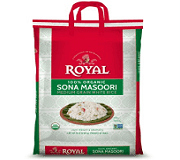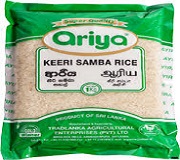Category
- Atta/Flour/Grains/Rava
- Ayurvedic Health products
- Beans/Dal/Lentils
- Beverages/Health Drinks
- Chutney/ Curry Paste/ Sauce
- Coffee/Teas/Malt/Soups
- Dairy Products / Paneer
- Fresh Vegetables & Fruits
- Frozen Vegetables/Foods/Fruits
- Fryums / PapadumsFryums / Papadums
- Groceries
- Health & Beauty
- Household & Pooja Items
- Instant Mix / Sweet Mix / Ready To Eat
- Nuts & Dry Fruits
- Oil&Ghee
- Organic Products
- Others
- Pickles
- Rice
- Roti/Dosa batter/Idiyappam
- Spices/Herbs/Masala
- Sweets/Snacks/Biscuits
- Amma's Kitchen
- Anand
- Bansi Roasted chana
- Bhungra
- Britannia Biscuits
- Chikki
- Chocolates & Candies
- Deep Snacks
- Fresh Snacks (from our kitchen)
- Garvi Gujarat
- Grand Sweets
- Idhayam Snacks
- Janaki's
- Karachi's Biscuits
- Khakhra
- Khari
- Kurkure / chips
- Mopleez's
- MTR Snacks
- Nilamel Snacks
- Pani Puri
- Parle Biscuits
- Snacks / Appetizers
- Swad Snacks
- Sweets / Desserts
- Sweets / Snacks / Biscuits
- Udupi Snacks
- Vembanadu Snacks
- Wafers
Popular
-
 Nirav Kabuli Chana 2lb
$3.29
Nirav Kabuli Chana 2lb
$3.29
-
 Royal Organic Sona Masoori 20lb
$19.99
Royal Organic Sona Masoori 20lb
$19.99
-
 Ariya Red Rice 11.02lb
$11.99
Ariya Red Rice 11.02lb
$11.99
-
 Ariya Rosa Kekulu Rice 11.02lb
$8.99
Ariya Rosa Kekulu Rice 11.02lb
$8.99
-
 Ariya Keeri Samba Rice 11.02lb
$13.99
Ariya Keeri Samba Rice 11.02lb
$13.99

For purposes of section 199A, if you own an interest in a pass-through entity, the trade or business determination is made at the entity level. Material participation under section 469 isn’t required to qualify for the QBI deduction. Eligible taxpayers with income from a trade accounting or business may be entitled to the QBI deduction if they otherwise satisfy the requirements of section 199A. In general, total taxable income in 2023 must be under $182,100 for single filers or $364,200 for joint filers to qualify. The deduction is limited to the lesser of the QBI component plus the REIT/PTP component or 20 percent of the taxpayer’s taxable income minus net capital gain.
- If your income exceeds the threshold amount, there is a formula to calculate your deduction.
- However, amounts not properly included in a return filed with the Social Security Administration on or before the 60th day after the due date (including extensions) for that return are not included (Sec. 199A(b)(4)(C)).
- Businesses like financial planners, lawyers, doctors, consultants, etc.
- Material participation under section 469 isn’t required to qualify for the QBI deduction.
- Once it hits this phaseout, you get the lesser of 20% of business profits or 50% of all allocable w2 wages (unless you are an SSTB which we will talk about later).
- Losses and deductions retain their status as either qualified or non-qualified from year to year while suspended.
About Form 8995, Qualified Business Income Deduction Simplified Computation

Once it hits this phaseout, you get the lesser of 20% of business profits or 50% of all allocable w2 wages (unless you are an SSTB which we will talk about later). If there are any prior year suspended losses allowed remaining from column C, row 3, after Step 4, allocate the remaining prior year suspended losses allowed between QBI and Non-QBI using the FIFO method until each year’s loss has been reduced to zero. If there are any prior year suspended losses allowed remaining from column C, row 2, after Step 1, allocate the remaining prior year suspended losses allowed between QBI and Non-QBI. When allocating prior year suspended losses allowed (column C) between Non-QBI (column F) and QBI (column J), the First-In-First-Out (FIFO) method must be used.
Mechanics of the new Sec. 199A deduction for qualified business income
- Use Form 8995 to figure your qualified business income deduction.
- He has experience across industries, including construction, technology and professional services which gives him a deep understanding of business.
- Stay informed and proactive with guidance on critical tax considerations before year-end.
- To apply this rule, prior year suspended losses allowed must first be allocated to any losses suspended from 2017 and earlier, until the pre-2018 loss (row 1) are exhausted.
- Your qualified trades and businesses include your domestic trades or businesses for which you’re allowed a deduction for ordinary and necessary business expenses under section 162.
- If you don’t have an EIN, enter the owner’s name and tax identification number.
If your income is more than the threshold, you must use Form 8995-A. The overwhelming majority of small businesses are likely to be below the low threshold (threshold refers to all the net income and all the 1040 return taxable income based on your filing status). They will automatically qualify even if they are in an otherwise excluded industry, have not paid out wages, or do not own any assets.

Determining Your Qualified Trades or Businesses
She purchased the building for $500,000 and the land is worth $100,000. The adjusted basis of the building is $400,000 ($500,000 – $100,000). This planning leads to you getting a $142,857 deduction vs the example above of $50k, all because you did the planning correctly at year end and got wages to the optimal number. That is over $90k of additional deductions which saves anywhere from $20k-$45k based on state and tax bracket. So few actually do this planning at year end and run bonuses to fine tune the deduction.
What does the Qualified Business Income Deduction allow me to Deduct?
The qualified business income deduction (QBI) is a tax deduction that allows eligible self-employed and small-business owners to deduct up to 20% of their qualified business income on their taxes. For instance, a taxpayer with $30,000 of QBI, $100,000 in total taxable income, and $5,000 in capital gains would simply apply 20% to their QBI because it’s the lesser of the two amounts ($30,000 vs. $95,000). In this case, they’d get 20% of $30,000 for a $6,000 deduction. If all the safe harbor requirements are met, an interest in rental real estate will be treated as a single trade or business for purposes of the deduction. If an interest in real estate fails to satisfy all the requirements of the safe harbor, it may still be treated as a trade or business for purposes of the deduction if it otherwise meets the definition of a trade or business. This deduction applies to Schedule C filers (sole proprietorships and other self-employed businesses), LLCs, partnerships, S corporations, estates, and trusts.

For Jack and Jill, these two amounts work out to $25,000 and $32,500 respectively, with the $32,500 being the greater amount. To calculate their excess amount, they subtract Partnership Accounting the greater amount figure of $32,500 from 20% of their QBI ($60,000) to come up with $27,500. She also owns the building that the widget business operates out of.

Such Code provisions include, but aren’t limited to, sections 163(j), 179, 461(l), 465, 469, 704(d), and 1366(d). Instead, qualified losses and deductions qbid are taken into account in the tax year they’re included in calculating your taxable income. The deduction amount depends on the taxpayer’s total taxable income, which includes wages, interest, capital gains (etc.) in addition to income generated by the business. Once the taxable income reaches or exceeds $191,950 ($383,900 if filing jointly), the type of business also comes into play. The initial step in calculating the Sec. 199A deduction begins with determining QBI. QBI is determined separately for each of the taxpayer’s qualified businesses.
- If your taxable income is within the phase-out range, then you calculate your percentage of the phase-out, multiply that by your income, reduce the qualified business income by that amount and take 20% of the remainder.
- This may influence which products we review and write about (and where those products appear on the site), but it in no way affects our recommendations or advice, which are grounded in thousands of hours of research.
- The deduction is available to both itemizers and nonitemizers.
- If you own a business that will do $200k in profit, you would then get 20% of that profit ($200k) as a deduction for QBID.
- The taxpayer then applies the overall taxable income limitation to the combined QBI.
Generally, tax returns and return information are confidential, as required by section 6103. If you choose to aggregate multiple trades or businesses, including or apart from any aggregations made by an RPE, complete Schedule B (Form 8995-A) before starting Part I of Form 8995-A. You must attach any RPE aggregation statement(s) to your Schedule B (Form 8995-A). The rental or licensing of property to a commonly controlled trade or business operated by an individual or a pass-through entity is considered a trade or business under section 199A. As provided in section 162, an activity qualifies as a trade or business if your primary purpose for engaging in the activity is for income or profit and you’re involved in the activity with continuity and regularity. An ESBT must compute the QBI deduction separately for the S and non-S portions of the trust.

Leave a Reply